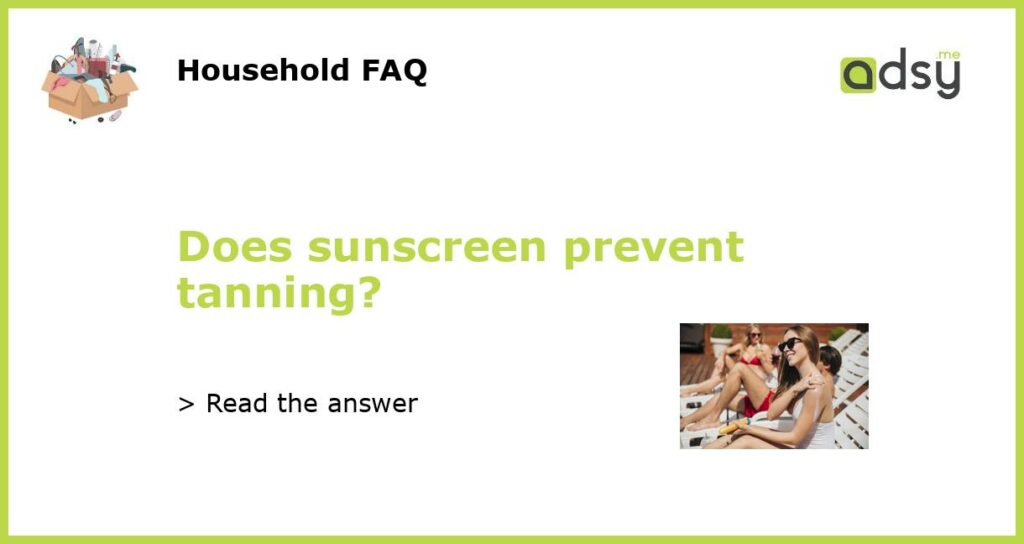The role of sunscreen in preventing tanning
There is a common misconception that sunscreen completely prevents tanning. However, the truth is that sunscreen can help to reduce the risk of tanning, but it does not completely prevent it. Sunscreen works by blocking or absorbing the harmful ultraviolet (UV) rays from the sun. These rays are responsible for causing skin damage, including sunburn and tanning. When applied correctly and reapplied as needed, sunscreen can help to protect the skin from the sun’s harmful rays.
How does sunscreen work?
Sunscreens typically contain various active ingredients that work to protect the skin from UV rays. These ingredients include organic and inorganic compounds such as zinc oxide, titanium dioxide, avobenzone, and oxybenzone. Inorganic compounds reflect and scatter UV radiation, while organic compounds absorb UV radiation and convert it into a less harmful form of energy.
Sunscreen with a high sun protection factor (SPF) is more effective at blocking UV rays. SPF refers to the amount of time it takes for your skin to burn compared to unprotected skin. For example, if you usually burn after 10 minutes of sun exposure, an SPF 30 sunscreen theoretically allows you to stay in the sun for 300 minutes without burning. However, it’s essential to note that SPF only measures protection against UVB rays, not UVA rays, which also contribute to tanning.
The limitations of sunscreen in preventing tanning
While sunscreen can provide some level of protection against tanning, it is not foolproof. Tanning occurs when the skin’s melanin production is stimulated by exposure to UV rays. Sunscreen can help to block or absorb some of these rays, but it cannot completely prevent them from reaching your skin. Therefore, some level of tanning may still occur, even when wearing sunscreen.
It’s important to remember that there are different types of UV rays, including UVA and UVB. UVB rays are primarily responsible for causing sunburn, while UVA rays penetrate deeper into the skin and contribute to tanning. While some sunscreens offer broad-spectrum protection against both UVA and UVB rays, not all sunscreens provide the same level of protection against UVA rays. Therefore, it’s crucial to choose a sunscreen that offers broad-spectrum protection to minimize tanning.
Other measures to prevent tanning
In addition to wearing sunscreen, there are other measures you can take to reduce the risk of tanning. Avoiding direct sun exposure during peak hours (usually between 10 am and 4 pm) can help to minimize your exposure to UV rays. Seeking shade, wearing protective clothing such as hats and long-sleeved shirts, and using sunglasses can also provide additional protection.
It’s important to note that even with these measures in place, some level of tanning may still occur. The duration and intensity of sun exposure, as well as individual skin type, can all influence the degree of tanning. It’s essential to listen to your body and take breaks from the sun when necessary to avoid overexposure.
Summary
While sunscreen can help to reduce the risk of tanning, it does not completely prevent it. Sunscreen works by blocking or absorbing the harmful UV rays from the sun, but some rays may still reach the skin. It is crucial to choose a broad-spectrum sunscreen with a high SPF to provide the best possible protection against both UVA and UVB rays. Additionally, taking other measures such as avoiding direct sun exposure during peak hours and wearing protective clothing can further reduce the risk of tanning. It’s important to remember that some level of tanning may still occur, and it’s essential to listen to your body and take breaks from the sun when needed.






